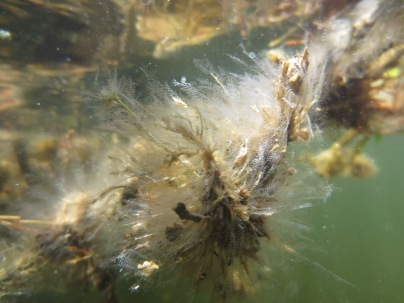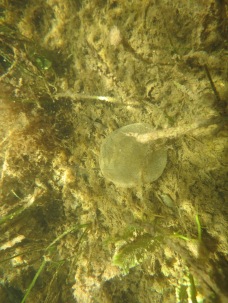Last week I was able to get down to Key Largo for the American Water Resources Association (AWRA) Florida chapter annual meeting. Like any opportunistic biologist I always take the opportunity to look around.
The first place I went before even checking into my hotel room was John Pennekamp Coral Reef State Park. One of my favorite things to do there is to snorkel around mangrove roots. People familiar with mangroves often know that they harbor a complex root system (especially red mangroves with buttressing roots) that protects and supports many species including juvenile fish. What surprised me on my first visit several years ago to the park, is how many different things live on the roots themselves. These epiphytes (“epi” meaning on, and “phyte” meaning plant) and epizoans (“zoans” refers to animals) are vibrant and diverse. The delicate little tendrils of minute anenomes are littered in among examples of solitary and colonial species of tunicates, little squishy organisms with in-current and ex-current siphons. Clusters of Isognomon alatus, the flat tree oyster, are visible. It’s an amazing brackish little universe.
While they may seem a little frenetic, I captured a couple videos as well. The first is a little tour of the mangrove roots I describe above:
And the next is of a small barracuda I followed for a moment or two:
I later moved my prospecting off shore a couple days later when I donned scuba gear with Rainbow Reef Dive Center. Besides the surprise siting of an interesting shark or notable sea creature, one of the appeals of diving down in the keys is the intricate landscape of benthic creatures including things like corals, sponges, and christmas tree worms.
And while I can always be kept busy watching the variety of oddly colored and shaped fish, the appearance of a rather large green moray eel doesn’t disappoint!:








